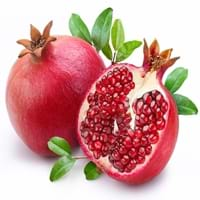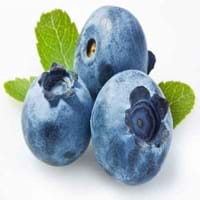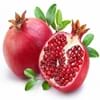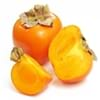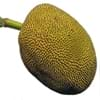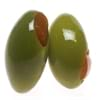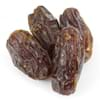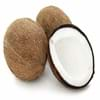Health Benefits
Cancer prevention, Heart care, Helps in cartilage regeneration, Improves stomach health, Increase in haemoglobin, Increases metabolic rate, Prevents constipation
Anti depressant, Cancer prevention, Heart care, Increases metabolic rate, Prevents constipation
General Benefits
Boosts immune system, Controls blood pressure, Controls blood sugar levels, Digestive aid, Maintains healthy cholesterol level
Anti oxidant properties, Controls blood pressure, Digestive aid, Eye care, Helps in weight loss, Strengthens bones
Skin Benefits
Anti-aging benefits, Skin rejuvenation, Treatment of acne
Anti-aging benefits, Reduces wrinkles, Skin rejuvenation, Skin revitalization, Treatment of acne, Treatment of dark spots
Hair Benefits
Prevents hair loss, Promotes longer and healthier hair, Treatment of dandruff
Promotes longer and healthier hair, Regulates hair growth
Allergy Symptoms
Abdominal pains, Anaphylaxis, Itching
Abdominal pains, Anaphylaxis, Breathing difficulty, Coughing, Decrease in blood pressure, Diarrhea, Eczema, Fainting, Hives, Lightheadedness, Nausea, Runny nose, Sneezing, Swelling of mouth, tongue or lips, Vomiting, Wheezing
Side Effects
Allergic reaction, Cold, Breathing difficulty, Irritation, Swelling
Affects blood glucose levels, Decrease in blood sugar levels, Allergic reaction
Best Time to Eat
Best if taken as a breakfast (or empty stomach), As a snack in the late afternoon, Eat the fresh ones, avoid mixing with any other foods, don't eat after meal., Morning time (before lunch)
As a snack in the late afternoon, Eat the fresh ones, avoid mixing with any other foods, don't eat after meal., Morning time (before lunch)
Vitamin B5 (Pantothenic Acid)
Vitamin C (Ascorbic Acid)
Vitamin K (Phyllochinone)
Phytosterol
Not Available
Calories in Fresh Fruit with Peel
Not Available
Calories in Fresh Fruit without Peel
Not Available
Calories in Frozen Form
Not Available
Calories in Canned Form
Not Available
Varieties
Balegal, Crab, Cloud, Francis, Freshman and Granada
Pink Lemonade, Bluecrop, Bluejay, Blueray, Bonus, Duke, Elliott, Jersey, Nelson, Northland, Patriot, Sierra, Spartan, Northcountry, Northsky and Premier and Climax
Color
Dark red, Light pink-red
Blue, Indigo
Inside Color
Red
Greyish-white
Origin
India, Iran
North America
Soil Type
Clay, Sand
Porous, Well-drained
Climatic Conditions
Cold, Dry, Hot
Cold
Facts about
- Pomegranate means apple with many seeds.
- It was called as the “apple of Grenada” in early English.
- In Hinduism, this fruit symbolizes prosperity and fertility.
- Pomegranate trees can live upto 200 years.
- National blueberry month is July as blueberries are harvested in July.
- They are the official berries of Nova Scotia, Canada.
- Blueberries are used as natural food color and can protect you from memory loss.
Top Producer
Iran
United States of America
Other Countries
Africa, India, Middle east, Pakistan
Canada, Germany, Netherlands, Poland
Top Importer
Europe
United States of America
Botanical Name
Punica granatum
Vaccinium myrtillus
Synonym
Punica malus
Not Available
Subkingdom
Tracheobionta
Tracheobionta
Division
Magnoliophyta
Magnoliophyta
Class
Magnoliopsida
Magnoliopsida
Subclass
Rosidae
Dillenhidae
Family
Lythraceae
Ericaceae
Species
P. granatum
V. myrtillus
Generic Group
Pomegranate
Heath
Difference Between Pomegranate and Blueberry
We might think that Pomegranate and Blueberry are similar with respect to nutritional value and health benefits. But the nutrient content of both fruits is different. Pomegranate and Blueberry Facts such as their taste, shape, color, and size are also distinct. The difference between Pomegranate and Blueberry is explained here.
The amount of calories in 100 gm of fresh Pomegranate and Blueberry with peel is Not Available and 57.00 kcal and the amount of calories without peel is 83.00 kcal and Not Available respectively. Thus, Pomegranate and Blueberry belong to and category.These fruits might or might not differ with respect to their scientific classification. The order of Pomegranate and Blueberry is Myrtales and Ericales respectively. Pomegranate belongs to Lythraceae family and Blueberry belongs to Ericaceae family. Pomegranate belongs to Punica genus of P. granatum species and Blueberry belongs to Vaccinium genus of V. myrtillus species. Beings plants, both fruits belong to Plantae Kingdom.
